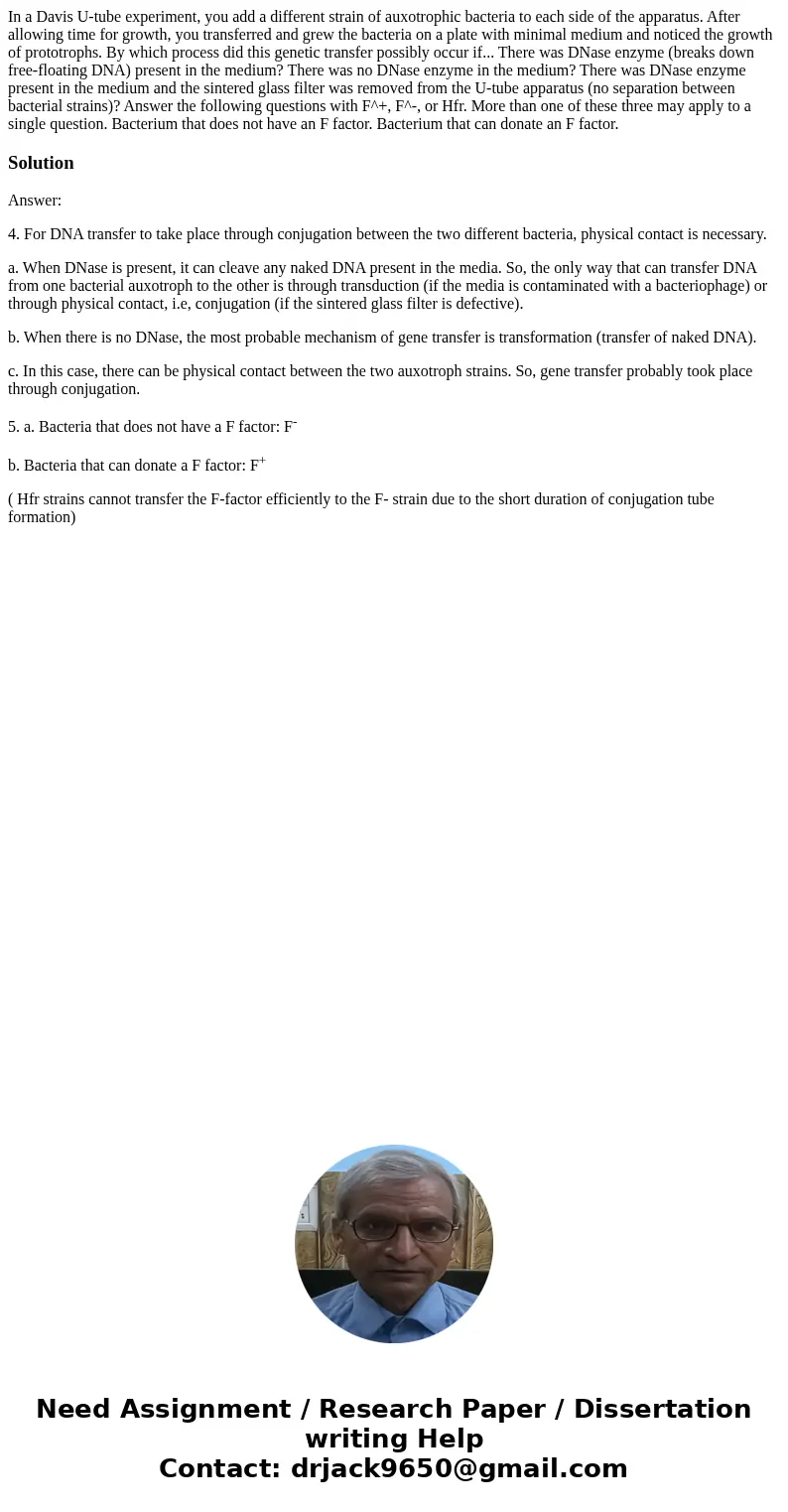In a Davis Utube experiment you add a different strain of au
Solution
Answer:
4. For DNA transfer to take place through conjugation between the two different bacteria, physical contact is necessary.
a. When DNase is present, it can cleave any naked DNA present in the media. So, the only way that can transfer DNA from one bacterial auxotroph to the other is through transduction (if the media is contaminated with a bacteriophage) or through physical contact, i.e, conjugation (if the sintered glass filter is defective).
b. When there is no DNase, the most probable mechanism of gene transfer is transformation (transfer of naked DNA).
c. In this case, there can be physical contact between the two auxotroph strains. So, gene transfer probably took place through conjugation.
5. a. Bacteria that does not have a F factor: F-
b. Bacteria that can donate a F factor: F+
( Hfr strains cannot transfer the F-factor efficiently to the F- strain due to the short duration of conjugation tube formation)

 Homework Sourse
Homework Sourse